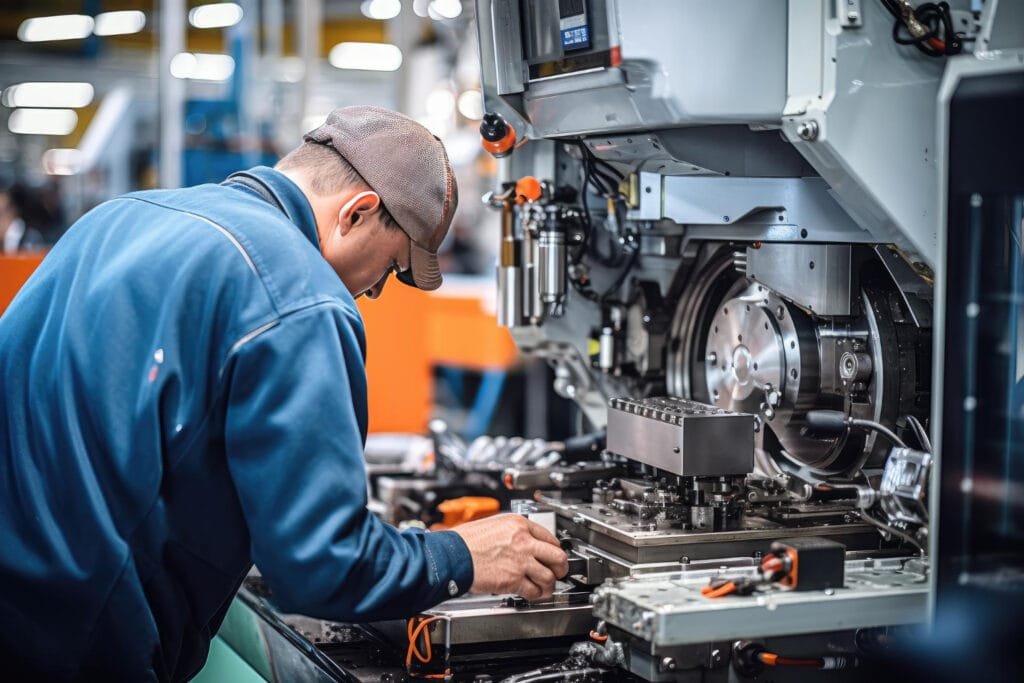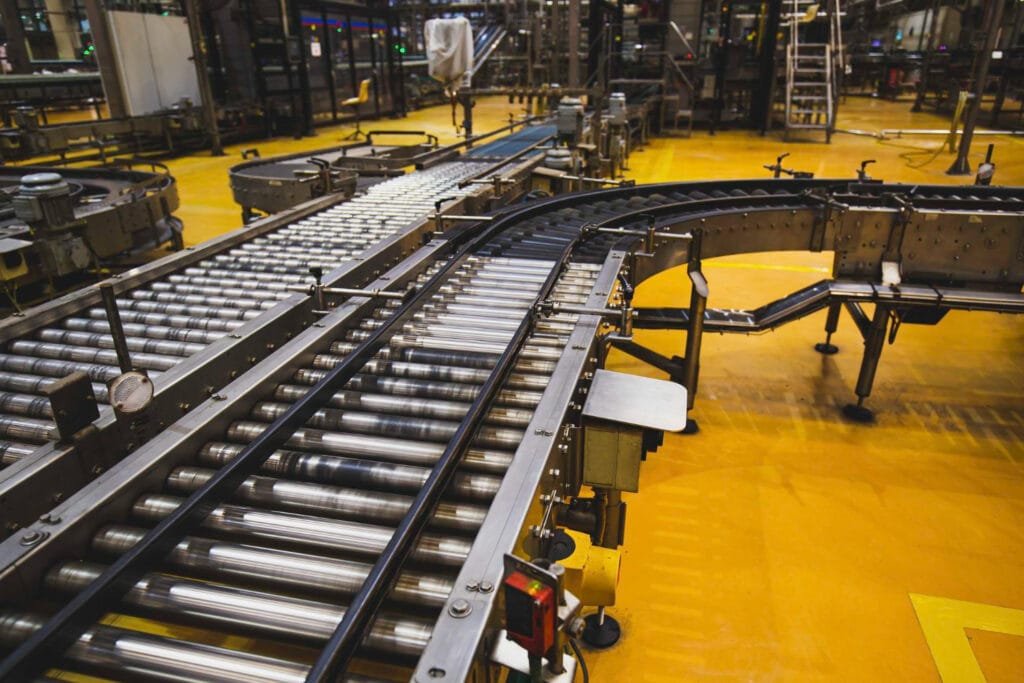In the dynamic landscape of today’s industries, change is the only constant. Technological advancements, market fluctuations, and evolving consumer demands necessitate a proactive approach to maintenance strategies. A resilient maintenance strategy is crucial for organizations to adapt to these changes while ensuring the reliability and longevity of their assets. In this article, we will delve into the key components of building a resilient maintenance strategy that can withstand the challenges posed by changing industries.
Understanding the Dynamics of Changing Industries
Before we delve into the specifics of building a resilient maintenance strategy, it is imperative to understand the dynamics of changing industries. Industries today are subject to rapid transformations driven by factors such as technological innovations, regulatory changes, and shifts in consumer preferences. These changes can have a profound impact on the operational landscape of organizations, making it essential for them to stay ahead of the curve.
The Role of Technology
One of the primary drivers of change in industries is technology. Advancements in automation, artificial intelligence, and data analytics are revolutionizing how businesses operate. Integrating these technologies into maintenance practices can enhance efficiency and accuracy, but it also requires a flexible strategy that can accommodate rapid technological changes.
Regulatory Challenges
Industries are often subject to evolving regulations aimed at ensuring safety, sustainability, and ethical practices. Navigating these regulatory landscapes requires a maintenance strategy that can adapt to compliance requirements while minimizing disruptions to operations.
Shifting Consumer Demands
Consumer preferences and expectations are continually evolving, driven by factors such as environmental consciousness, digital experiences, and personalized services. Adapting to these shifts requires a maintenance strategy that aligns with the changing needs of the market.
Key Components of a Resilient Maintenance Strategy
Building a resilient maintenance strategy involves a holistic approach that considers technological, regulatory, and market dynamics. Here are the key components that organizations should focus on to create a maintenance strategy that can withstand the challenges of changing industries.
Proactive Maintenance Planning
Rather than waiting for equipment to fail, a resilient maintenance strategy adopts a proactive approach. Predictive and preventive maintenance techniques leverage data and analytics to anticipate issues before they occur. This not only minimizes downtime but also extends the lifespan of assets.
Implementing Predictive Maintenance
Predictive maintenance relies on real-time data from sensors and monitoring devices to predict when equipment is likely to fail. By analyzing patterns and trends, organizations can schedule maintenance activities precisely when they are needed, optimizing resources and reducing unplanned downtime.
Benefits of Preventive Maintenance
Preventive maintenance involves scheduled inspections and repairs to prevent equipment failure. Regular maintenance checks can identify and address potential issues early, ensuring that assets operate at peak performance. This approach is particularly effective in industries where the cost of downtime is high.
Embracing Digitalization and Connectivity
In an era of Industry 4.0, digitalization is a cornerstone of resilient maintenance strategies. The integration of smart sensors, IoT devices, and cloud-based platforms allows organizations to gather real-time data and insights, enabling more informed decision-making.
IoT and Condition Monitoring
The Internet of Things (IoT) facilitates connectivity between devices and systems, providing a wealth of data for maintenance purposes. Condition monitoring, enabled by IoT, allows organizations to track the health and performance of equipment in real time, enabling proactive interventions.
Cloud-Based Maintenance Management Systems
Cloud-based maintenance management systems centralize data, making it accessible from anywhere at any time. This enhances collaboration among maintenance teams and enables the seamless integration of new technologies and updates. Cloud solutions also offer scalability, accommodating the growth and changing needs of the organization.
Data Analytics for Informed Decision-Making
The abundance of data generated by connected devices is valuable only when it can be translated into actionable insights. Data analytics tools can analyze patterns, identify trends, and provide predictive maintenance models, empowering organizations to make informed decisions about their maintenance strategies.
Flexibility in the Face of Technological Advancements
Given the rapid pace of technological advancements, a resilient maintenance strategy must be flexible and adaptable. Organizations should cultivate a culture of innovation that embraces new technologies and methodologies, ensuring that their maintenance practices remain at the forefront of industry standards.
Continuous Learning and Training
To keep pace with technological changes, maintenance teams need continuous learning and training programs. Whether it’s upskilling existing staff or hiring professionals with expertise in emerging technologies, investing in human capital is essential for a resilient maintenance strategy.
Scalable Infrastructure
The infrastructure supporting maintenance activities should be scalable to accommodate the integration of new technologies. This includes not only hardware and software but also communication protocols and data security measures. Scalability ensures that the organization can seamlessly adopt and implement the latest advancements without major disruptions.
Collaboration with Technology Providers
Collaborating with technology providers and staying abreast of industry partnerships can provide organizations with early access to cutting-edge solutions. By engaging in a dialogue with technology experts, organizations can align their maintenance strategies with upcoming innovations and industry best practices.
Navigating Regulatory Challenges
Regulatory compliance is a critical aspect of maintaining resilience in the face of industry changes. Organizations must stay informed about existing and upcoming regulations relevant to their operations and ensure that their maintenance practices align with these requirements.
Compliance-Centric Maintenance Practices
Building a maintenance strategy that prioritizes compliance involves understanding and integrating regulatory requirements into day-to-day operations. This may include regular audits, documentation of maintenance activities, and the implementation of measures to address specific compliance standards.
Regulatory Monitoring and Updates
Staying informed about regulatory changes requires a proactive approach. Organizations should establish mechanisms to monitor regulatory updates, assess their implications, and make necessary adjustments to their maintenance strategies. This ensures that compliance remains an integral part of the overall operational framework.
Cross-Functional Collaboration
Maintaining compliance is not solely the responsibility of the maintenance department. Cross-functional collaboration involving legal, regulatory affairs, and quality assurance teams is essential. This ensures a comprehensive understanding of regulatory requirements and facilitates the development of maintenance practices that align with broader organizational goals.
Risk Management and Contingency Planning
Resilience in maintenance goes hand in hand with effective risk management and contingency planning. Organizations must identify potential risks, assess their impact on maintenance operations, and develop strategies to mitigate or manage these risks when they materialize.
Identifying Maintenance Risks
Maintenance risks can manifest in various forms, including equipment failures, supply chain disruptions, and workforce challenges. Conducting a thorough risk assessment allows organizations to prioritize and address potential risks based on their likelihood and impact.
Developing Contingency Plans
Contingency plans outline the steps to be taken when unexpected events occur. These plans should cover a range of scenarios, from equipment breakdowns to external factors such as natural disasters or economic downturns. Well-defined contingency plans enable organizations to respond swiftly and effectively, minimizing the impact of disruptions.
Utilizing Predictive Analytics for Risk Assessment
Predictive analytics can be applied not only to maintenance activities but also to risk assessment. By analyzing historical data and identifying patterns, organizations can anticipate potential risks and develop proactive strategies to mitigate their impact.
Adapting to Shifting Consumer Demands
Consumer demands are a driving force behind industry changes. Organizations that align their maintenance strategies with shifting consumer preferences can gain a competitive edge. This involves a customer-centric approach that focuses on delivering value and exceeding expectations.
Customer-Centric Maintenance Objectives
Understanding and meeting customer expectations is central to a resilient maintenance strategy. This requires organizations to prioritize customer satisfaction and align maintenance objectives with the value customers seek from their products or services.
Feedback Loops for Continuous Improvement
Establishing feedback loops with customers provides valuable insights into the performance of products and services. Customer feedback can highlight areas that require improvement in maintenance practices, enabling organizations to iterate and enhance their strategies continuously.
Personalization in Maintenance Services
As consumer demands become more personalized, maintenance services can also benefit from customization. Tailoring maintenance plans to the specific needs of individual customers or market segments enhances the overall customer experience and fosters long-term relationships.
Sustainable and Environmentally Conscious Maintenance
Sustainability is a growing concern for consumers and regulators alike. Organizations that incorporate environmentally conscious maintenance practices not only contribute to global sustainability goals but also position themselves as responsible and ethical industry players.
Green Technologies in Maintenance
Integrating green technologies into maintenance practices can reduce the environmental impact of operations. This may include the use of energy-efficient equipment, sustainable materials, and eco-friendly disposal methods. Adopting such practices not only aligns with consumer expectations but can also lead to cost savings in the long run.
Life Cycle Assessment for Sustainable Practices
A life cycle assessment (LCA) approach evaluates the environmental impact of products or services throughout their entire life cycle. Applying LCA principles to maintenance activities allows organizations to identify areas where they can minimize resource consumption, reduce waste, and make environmentally conscious decisions.
Agile Supply Chain Integration
Consumer demands are often intertwined with supply chain dynamics. Organizations must ensure that their maintenance strategies are agile enough to adapt to changes in the supply chain, whether it be sourcing materials, managing inventory, or responding to disruptions.
Collaborative Supply Chain Management
Maintaining an agile supply chain requires collaborative efforts with suppliers, distributors, and other partners. Organizations should establish transparent communication channels and leverage technology to create a responsive and flexible supply chain network.
Inventory Management and Resource Optimization
Efficient inventory management is crucial for meeting consumer demands while minimizing costs. Resilient maintenance strategies should include optimization techniques for inventory levels, ensuring that necessary spare parts are available without excessive stockpiling.
Adapting to Market Trends and Seasonal Variations
Consumer demands often exhibit seasonal variations and respond to market trends. Maintenance strategies should be designed to accommodate these fluctuations, ensuring that resources are allocated efficiently during peak periods and scaled down during slower times.
Implementing Resilient Maintenance Practices in Action
Building a resilient maintenance strategy is not a one-size-fits-all endeavor. Each organization must tailor its approach based on its industry, operational scale, and specific challenges. However, there are common principles and best practices that can guide the implementation of resilient maintenance practices.
Establishing a Cross-Functional Maintenance Team
The success of a resilient maintenance strategy relies on collaboration across departments. Establishing a cross-functional maintenance team that includes representatives from operations, technology, finance, and compliance ensures a comprehensive and well-rounded approach to maintenance planning and execution.
Communication and Knowledge Sharing
Effective communication is key to breaking down silos between departments. Regular knowledge-sharing sessions, workshops, and collaborative problem-solving contribute to a culture of continuous improvement and innovation within the maintenance team.
Integrated Decision-Making Processes
Integrating maintenance decisions into the broader organizational decision-making processes ensures that maintenance strategies align with overall business objectives. This integration involves incorporating maintenance considerations into strategic planning, budgeting, and risk management discussions.
Emphasizing a Culture of Proactive Maintenance
Resilient maintenance practices are rooted in a culture that values proactive measures over reactive responses. Fostering a mindset that prioritizes preventive and predictive maintenance creates a resilient foundation for the organization.
Recognition of Proactive Efforts
Acknowledging and rewarding proactive efforts within the maintenance team reinforces the importance of a forward-thinking approach. This recognition can take the form of performance incentives, professional development opportunities, or public acknowledgment of successful initiatives.
Continuous Improvement and Adaptation
A culture of resilience requires a commitment to continuous improvement. Organizations should regularly evaluate the effectiveness of their maintenance strategies, solicit feedback from team members, and adapt to changing circumstances. This iterative process ensures that the maintenance strategy remains dynamic and responsive.
Investing in Technology and Training
The integration of technology into maintenance practices requires both financial investment and a commitment to training and upskilling personnel. Organizations should allocate resources to acquire and implement the latest technologies while concurrently investing in training programs to ensure that staff can effectively leverage these tools.
Technology Roadmaps for Future Planning
Developing technology roadmaps allows organizations to plan their technological investments strategically. These roadmaps should align with the organization’s long-term goals and incorporate anticipated technological advancements, ensuring that maintenance practices remain at the forefront of industry standards.
Training Programs for Skill Development
The effectiveness of technology relies on the proficiency of the individuals using it. Training programs should be tailored to the specific technologies implemented, providing maintenance personnel with the skills and knowledge needed to maximize the benefits of these tools.
Monitoring Key Performance Indicators (KPIs)
Key performance indicators (KPIs) provide quantifiable metrics for evaluating the success of maintenance strategies. Monitoring KPIs allows organizations to identify areas of improvement, measure the impact of changes, and make data-driven decisions to optimize maintenance practices.
Downtime Reduction Metrics
Reducing downtime is a fundamental goal of resilient maintenance strategies. Organizations should track metrics related to downtime, such as mean time between failures (MTBF) and mean time to repair (MTTR), to assess the effectiveness of their maintenance efforts in minimizing disruptions.
Cost-Efficiency Indicators
Cost-efficiency is another crucial aspect of maintenance performance. Monitoring KPIs related to maintenance costs, such as maintenance cost per unit produced or maintenance cost as a percentage of total operational costs, provides insights into the financial sustainability of the maintenance strategy.
Overall Equipment Effectiveness (OEE)
OEE is a comprehensive metric that evaluates the performance, availability, and quality of equipment. By monitoring OEE, organizations can gain a holistic understanding of how well their maintenance practices contribute to overall operational excellence.
Conclusion
In a landscape of constant change, building a resilient maintenance strategy is imperative for organizations seeking to thrive in evolving industries. By understanding the dynamics of change, embracing technological advancements, navigating regulatory challenges, and aligning with shifting consumer demands, organizations can lay the foundation for a maintenance strategy that stands the test of time.
From proactive maintenance planning and digitalization to risk management and customer-centric approaches, the key components outlined in this article provide a comprehensive guide for organizations aiming to build resilience into their maintenance practices. By implementing these principles in a strategic and adaptive manner, organizations can not only navigate the challenges of changing industries but also position themselves as leaders in innovation, sustainability, and customer satisfaction.






